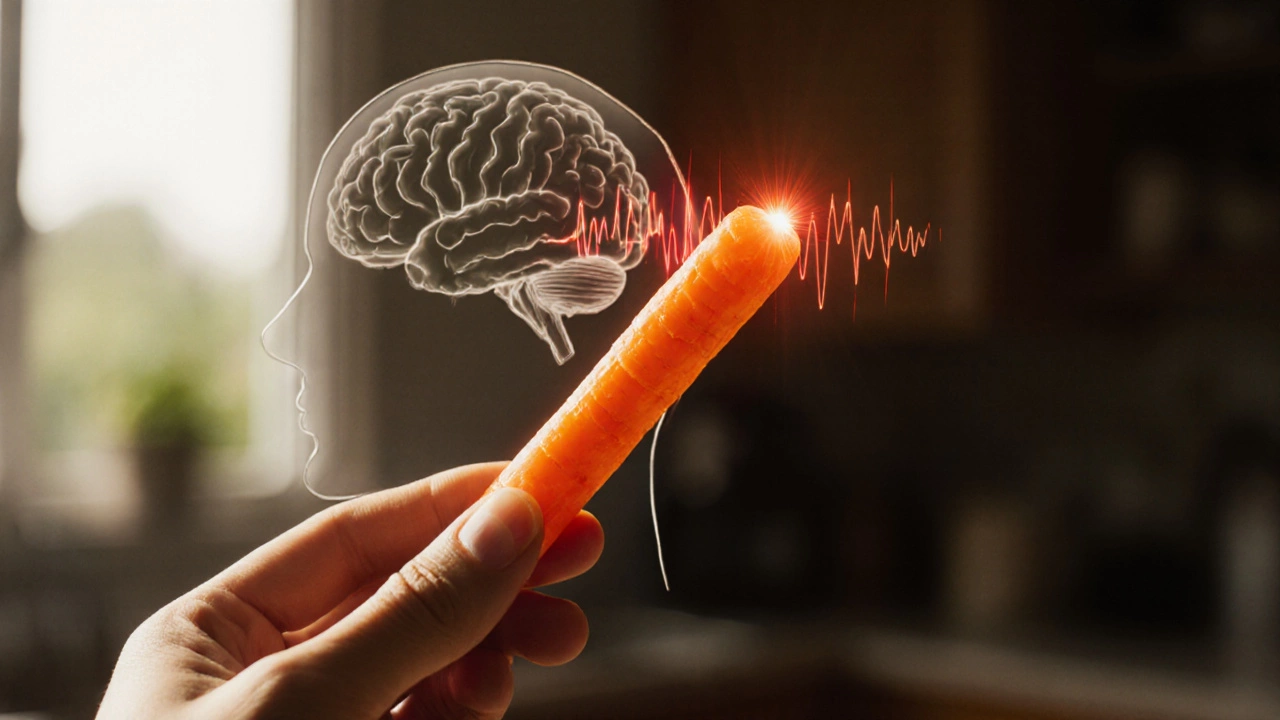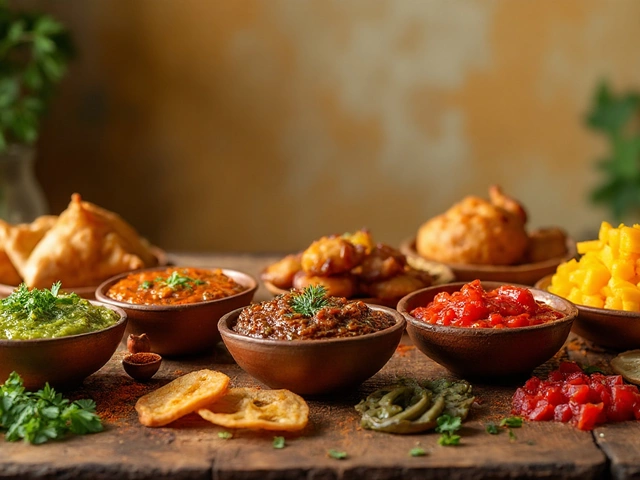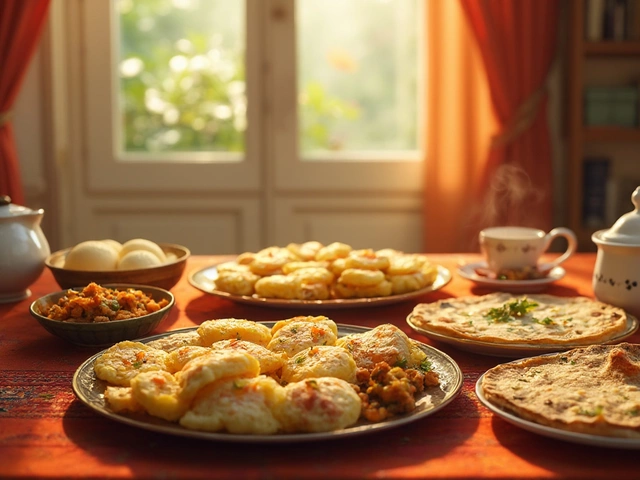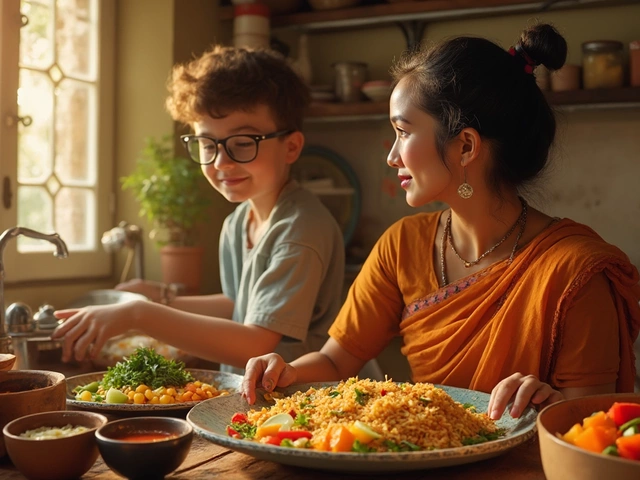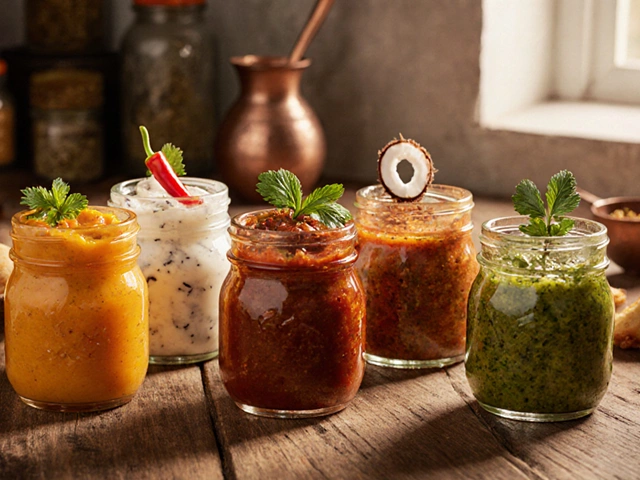Crunchy Snack Health Comparison Tool
Calories:
Fiber Content: g
Glycemic Index:
Satiety Rating: /5
| Snack | Calories | Fiber (g) | Glycemic Index | Satiety Rating |
|---|---|---|---|---|
| Air-popped popcorn (3 cups) | 90 | 3.5 | 55 | 3 |
| Raw carrots (1 cup sticks) | 50 | 3.4 | 35 | 4 |
| Roasted chickpeas (½ cup) | 120 | 6.0 | 28 | 5 |
| Potato chips (1 oz) | 150 | 1.2 | 70 | 2 |
| Rice cakes (2 pieces) | 70 | 0.8 | 82 | 2 |
Key Takeaways
- Crunchy cravings are driven by a mix of brain chemistry, sensory pleasure, and metabolic signals.
- Dopamine spikes when you bite into a crisp texture, reinforcing the habit.
- High‑glycemic or low‑fiber foods can intensify the need for crunch.
- Mindful eating and swapping to fiber‑rich, low‑calorie crunches can curb the addiction.
- Small, consistent changes in texture choices lead to lasting satisfaction.
What Makes Crunchy Food So Compelling?
When you hear that unmistakable snap of a fresh carrot or the crackle of a potato chip, your brain lights up. Crunchy Food is any edible that delivers a hard, brittle texture that breaks with a distinct sound when bitten. The appeal isn’t just about taste; it’s a full‑body experience that engages sound, touch, and even smell.
Research shows that our ancestors relied on hard‑edged foods like nuts and seeds for survival because those items were nutrient dense and required effort to chew, signaling a rewarding payoff. Modern snack culture has hijacked that evolutionary cue, offering endless low‑nutrient, high‑crunch options that still trigger the same brain pathways.
The Brain’s Reward System and Crunch
Every time you bite into something crispy, a surge of Dopamine a neurotransmitter that signals pleasure and reinforces behavior floods the reward centers of your brain. This chemical rush tells your body, “That felt good-do it again.” Over time, the brain begins to associate the sound and feeling of crunch with a dopamine hit, creating a loop that feels almost addictive.
Studies using functional MRI have mapped this response: the nucleus accumbens lights up more for crunchy textures than for equally flavored but soft foods. The result? Even if the crunchy snack is bland, the brain still registers it as a reward, driving repeated consumption.
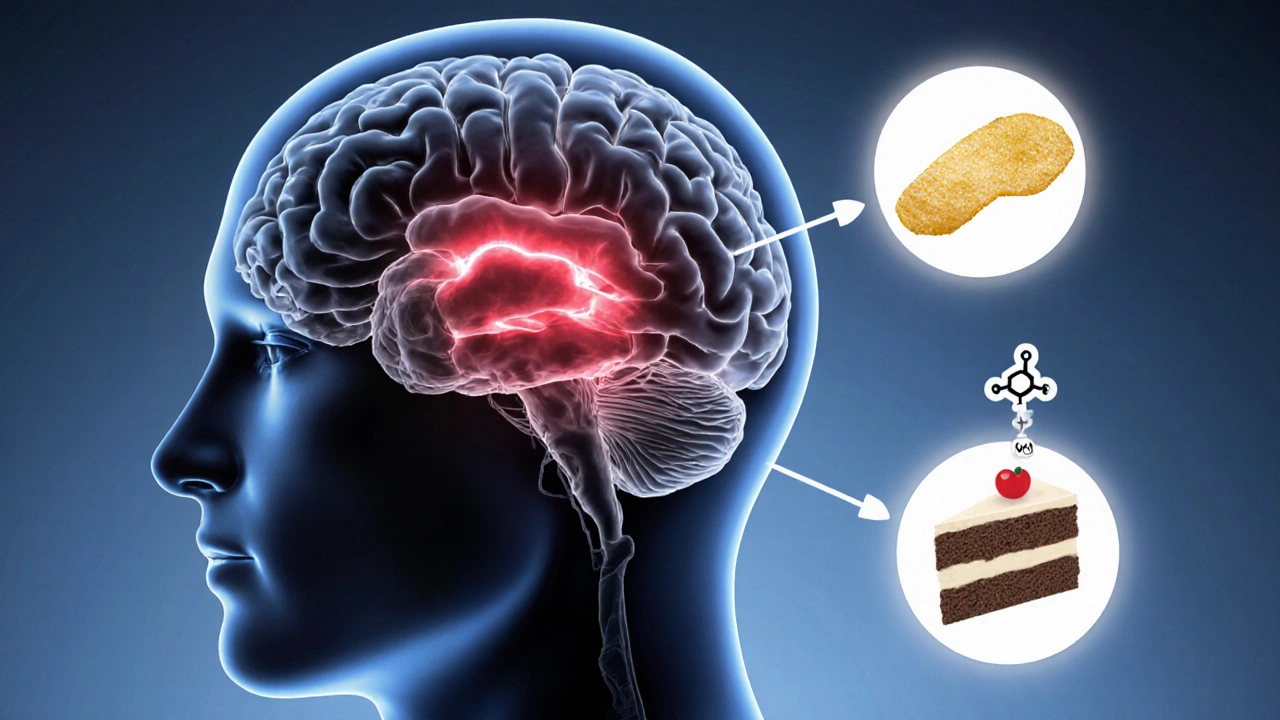
Why Texture Beats Flavor for Some People
Texture is a primary driver of oral sensory stimulation. Oral Sensory Stimulation the activation of nerves in the mouth that respond to pressure, vibration, and temperature sends signals to the brain that can outweigh taste cues. For many, the tactile feedback of a crunch satisfies a subconscious need for sensory variety, especially when other senses (like vision or hearing) are under‑stimulated.
This explains why someone might reach for a handful of pretzels even after a flavorful meal. The crunch fills a gap in the sensory experience, not just the palate.
Nutrition Factors That Fuel Crunch Cravings
Two nutritional elements often play hidden roles:
- Glycemic Index (GI): High‑GI foods cause rapid spikes and drops in blood sugar. The dip can trigger a craving for quick‑fix carbs, many of which are packaged as crunchy snacks.
- Fiber Content: Low‑fiber meals leave you less satiated, prompting a search for foods that can signal fullness. Crunchy textures, especially from fiber‑rich sources, give a false sense of satiety.
When you combine a diet low in fiber with frequent high‑GI meals, your body may start to associate crunch with the feeling of “being full,” even if the calories are minimal.
How to Manage the Crunchy Craving
Breaking the cycle doesn’t mean ditching all crunchy foods. Instead, rewire the habit by following these steps:
- Mindful Eating: Before you bite, pause and notice the sound, texture, and aroma. Ask yourself whether you’re truly hungry or just seeking sensory input.
- Swap to High‑Fiber Crunch: Choose raw veggies, roasted chickpeas, or air‑popped popcorn. They deliver the same tactile feedback with added nutrients.
- Balance Meals: Pair proteins and healthy fats with complex carbs to stabilize blood sugar, reducing the urge for a post‑meal crunch.
- Hydration Check: Thirst can masquerade as a craving. Drinking a glass of water before reaching for a snack often curbs the impulse.
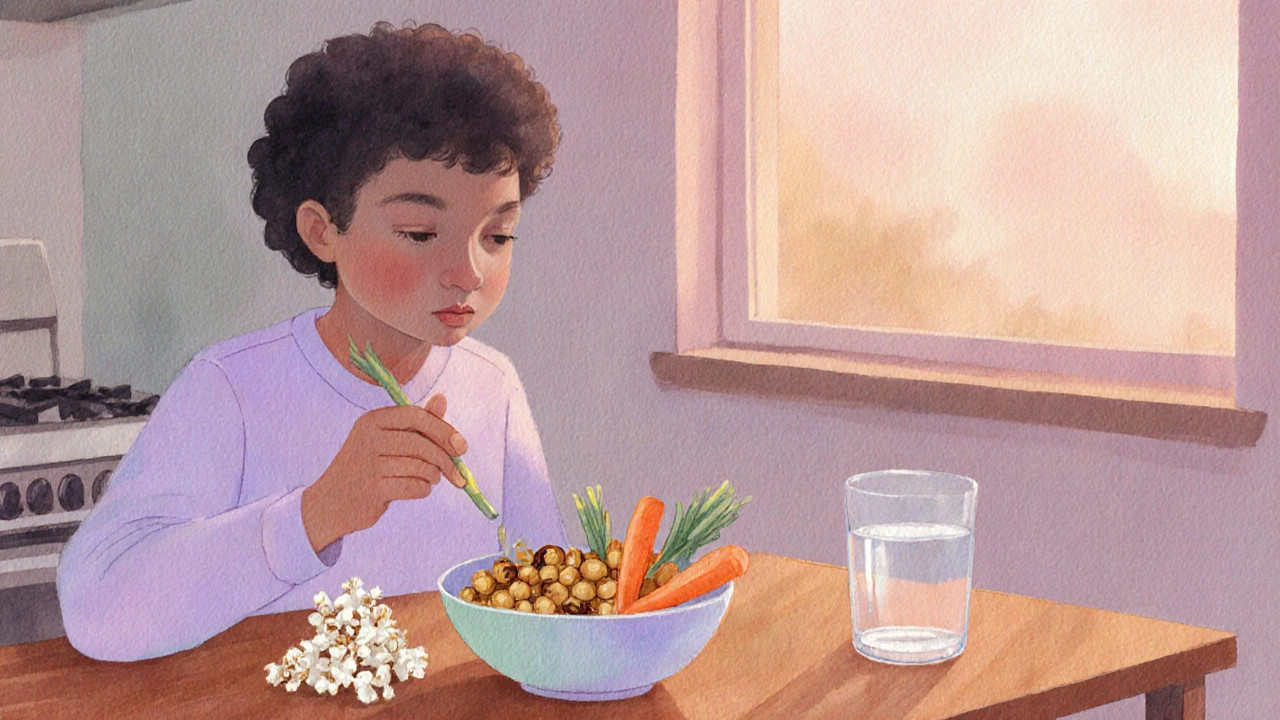
Healthier Crunchy Alternatives
Below is a quick comparison of common crunchy snacks, highlighting calories, fiber, glycemic index, and a subjective satiety rating (1‑5, with 5 being most filling). All values are per typical serving size.
| Snack | Calories | Fiber (g) | Glycemic Index | Satiety Rating |
|---|---|---|---|---|
| Air‑popped popcorn (3cups) | 90 | 3.5 | 55 | 3 |
| Raw carrots (1cup sticks) | 50 | 3.4 | 35 | 4 |
| Roasted chickpeas (½cup) | 120 | 6.0 | 28 | 5 |
| Potato chips (1oz) | 150 | 1.2 | 70 | 2 |
| Rice cakes (2pieces) | 70 | 0.8 | 82 | 2 |
Notice how roasted chickpeas and raw carrots score high on fiber and satiety while staying low on GI. They give you that satisfying snap without the blood‑sugar roller coaster.
Putting It All Together
Understanding the why behind your crunchy cravings is the first step to taking control. The mix of dopamine reward, oral sensory stimulation, and nutritional gaps creates a perfect storm for what feels like an addiction.
By:
- Recognizing the brain chemistry at play,
- Balancing meals to keep blood sugar steady,
- Choosing fiber‑rich, low‑GI crunchy foods, and
- Practicing mindful eating,
you can rewire the habit. The next time you hear that crunchy whisper, you’ll know whether it’s a genuine need or just a signal from a dopamine‑hungry brain.
Frequently Asked Questions
Why do I crave crunchy foods even after a full meal?
Crunchy textures trigger oral sensory stimulation and a dopamine response that can feel independent of hunger. If your meals are low in fiber or high in simple carbs, your brain may still seek the sensory “fullness” that crunch provides.
Can eating too many crunchy snacks affect my health?
Yes. Many commercial crunchy snacks are high in calories, sodium, and unhealthy fats. Overconsumption can lead to weight gain, elevated blood pressure, and blood‑sugar spikes, especially if the snacks are low in fiber.
What are the best low‑calorie crunchy alternatives?
Raw veggies (carrots, cucumber, bell pepper), roasted chickpeas, seaweed snacks, and air‑popped popcorn are excellent choices. They provide fiber, protein, or healthy fats while keeping calories in check.
How does dopamine influence food cravings?
Dopamine is released when the brain expects a reward. Crunchy foods produce a rapid, pleasurable sensory event, causing a dopamine surge that reinforces the desire to repeat the behavior.
Is there a way to satisfy the craving without extra calories?
Yes. Chewing sugar‑free gum or sipping sparkling water can mimic the oral stimulation. Pairing a small portion of a high‑fiber crunchy snack with a protein source also curbs cravings while keeping calories low.





